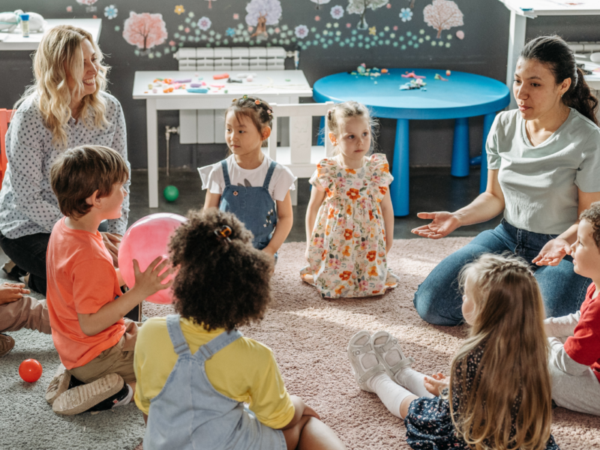The Team Around Your Child in Early Childhood Education and Care

Children with disability or developmental delay do best when the people supporting them– families, early childhood educators and therapists – work together as a team.
Research shows that a collaborative approach leads to better outcomes for children. When everyone shares information, coordinates efforts, and works toward the same goals, children receive consistent and effective support across all areas of their lives.
What is a team around the child?
A ‘team around the child’ (or simply, team), refers to a small group of people who support your child across home, early learning and in the community.
It’s not about formal meetings or rigid structures. It’s about strong relationships, open communication, and shared goals—making sure the key people in your child’s life are working together in a coordinated way.
Who is in the team?
Each child’s team looks a little different. In an Early Childhood Education and Care (ECEC) setting, the team might include:
- Parents or carers – you know your child best and play a central role in guiding the team
- Supportive family and friends – e.g., grandparents, close relatives or trusted friends who play a role in your child’s life
- A key worker – this is usually the person on your allied health team who coordinates your child’s care and serves as the main point of contact
- ECEC educators – early childhood teachers, childcare workers and support staff
- Therapists or allied health professionals – such as speech or occupational therapists
- Inclusion support professionals – professionals who help your child access and participate in early learning.
Who leads the team?
Some families have a key worker who help coordinate the team. If there is no key worker, families often take the lead in keeping everyone connected. This doesn’t mean doing it all—just ensuring that everyone stays informed and on the same page.
How to build a strong team around your child
- Keep the team focused and manageable – A smaller team of committed people who communicate well is often more effective than a larger group with unclear roles.
- Clarify roles – Everyone brings different knowledge and skills. Make sure it’s clear who is doing what—this avoids confusion and keeps things running smoothly.
- Check in regularly, but keep it simple – A formal meeting isn’t always necessary – sometimes a quick email, phone call or face-to-face chat is enough to keep the team aligned.
- Be flexible – things will change! – Your child’s needs will grow and change over time. Keep checking in on what’s working, and be ready to adjust strategies as needed.
- Celebrate progress—big or small – Whether it’s a new skill, a smoother transition, or a breakthrough in communication, recognising achievements keeps everyone motivated and reminds the team why their collaboration matters.
- Expect the team to evolve – As your child starts school or their needs change, the team will shift. That’s okay. Keep reviewing who’s involved and make space for new team members when needed.
- Support smooth transitions – When someone joins the team, take time to update them on your child’s needs, goals, and share what’s been working. This helps void setbacks and keeps things consistent for your child.
- Share strategies across settings – If something works at home or in therapy, share it with your child’s educators. Small adjustments—like using the same visual supports—can make a big difference.
- Acknowledge the team’s impact – Every person supporting your child plays a part in their progress. Taking time to thank and recognise others helps build strong, respectful relationships.
Related resources
Working in partnership with your ECEC setting